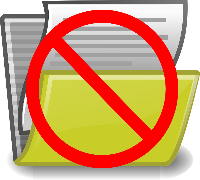August 2015 Newsletter
Keeping up the State taxes momentum from last issue, we explore the Payroll Tax Rebate and why we think it's a good thing. In other news, the Tax Office stops sending paper Activity Statements and Instalment notices for individuals who use the myGov website, and we take a quick look at the ATO app for mobile devices.
In this edition...
 In our last issue we applauded the South Australian Government for taking a courageous approach to formulating the State Budget. Payroll Tax is another tax that State Governments across the nation have difficulty weaning themselves from. While we lament the fact that Payroll Tax will probably be with us for some time to come, things have been moving in the right direction on that front in South Australia too.
In our last issue we applauded the South Australian Government for taking a courageous approach to formulating the State Budget. Payroll Tax is another tax that State Governments across the nation have difficulty weaning themselves from. While we lament the fact that Payroll Tax will probably be with us for some time to come, things have been moving in the right direction on that front in South Australia too.
Payroll Tax is levied on the annual wages bill of an employer. 'Wages' includes salaries and wages (obviously) but also includes things like commissions, bonuses, fringe benefits and superannuation. In South Australia it kicks in once the total cost of wages exceeds $600,000 in a single year, at a rate of 4.95% of the amount over $600,000.
Although it's great that smaller businesses with a lower payroll bill are exempt from Payroll Tax, it's not hard to see why it's a measure that functions as a deterrent to growth. If a business is expanding and needs to take on new staff, that business must take into account that in addition to the cost of the extra salaries and benefits, the remuneration of the new employees may result in additional Payroll Tax being payable. In cases where a business has been sitting just below the threshold, the result is a significant tax bill where previously there wasn't one.
To alleviate some of the negative impact for businesses in that very situation, the Small Business Payroll Tax Rebate was first introduced in the 2014 State Budget. It was to apply for two years, but in the most recent Budget announcement, it was extended to cover the 2015-16 tax year as well.
To be eligible for the rebate an employer must have a total payroll of under $1.2 million. The rebate effectively functions as a discount. For employers with payroll between $600,000 and $1 million, a rebate of 2.45% of the excess wages for the year is refunded in the year following. This has the effect of reducing the total rate of Payroll Tax paid from 4.95% to 2.5%. For a business with a payroll bill of $1 million, the value of the rebate is $9,800, paid as a refund to the business, provided it has finalised its reconciliation process for the year and paid its obligations in full. The rebate gradually phases out for businesses with payroll between $1 million and $1.2 million.
Another great aspect of the rebate is that there is no further paperwork or 'hoop-jumping' required. It can be the case with some Government incentives that the amount of work involved in accessing them reduces or even outweighs the benefit. In this case however Revenue SA already has all of the information they need in the annual Payroll Tax Reconciliation form. Eligible businesses need only complete their usual annual paperwork for Payroll Tax and then wait for their rebate cheques to arrive (some months later).
In a perfect world, a simple cut in the rate of tax applied for all employers would be ideal, however in the absence of such an aggressive reform, this is still a welcome initiative for small-medium businesses.
Although there are often rebates and positive tax initiatives announced at the Federal level from year to year, we must take into account the relative tax bases and the number of taxation vehicles at the disposal of Federal versus State Governments when making comparisons. Payroll Tax is one of only a handful of significant tax measures available to Governments at the State level. Another of these is Stamp Duty. So to simplify both of these measures and reduce their impost on business looks, relatively, much more like genuine steps towards real tax reform at the State level.
 If you're a sole trader or individual who has a myGov account, and you're also a Dewings client, we will no longer receive paper Activity Statements, Instalment Notices or Notices of Assessment for you at our office, even where we have selected a preference for paper.
If you're a sole trader or individual who has a myGov account, and you're also a Dewings client, we will no longer receive paper Activity Statements, Instalment Notices or Notices of Assessment for you at our office, even where we have selected a preference for paper.
The myGov website is a portal for individuals to access government services online, all in the one place. This might include services such as Centrelink, Medicare and the Tax Office.
One component of the service is a single inbox for managing messages from Government agencies.
It has been the case that we often receive paper correspondence relating to businesses that we act for. This has included copies of Activity Statements, Instalment Notices and Notices of Assessment.
However the Tax Office is gradually moving towards a more paperless system of distribution, and to that end one step in the process is that paper copies of these forms and notices will no longer be sent to taxpayers with a myGov account. Instead, they will be sent electronically, direct to the individual via their myGov Inbox.
As Tax Agents, we can still view the notifications through our own portal, however we will no longer be able to manage the paper distribution of Activity Statements, Instalment Notices and Notices of Assessment on behalf of our individual clients.
If you think you might be affected and need some clarification, please contact us.
If you're already using myGov, the Tax Office continues to move in the direction of using the service for all correspondence. A part of the process is that you can receive an email or SMS whenever there are new messages in your Inbox. It's probably a good idea to login from time to time and make sure that your contact details are up to date so that you continue to receive these notifications.
 Just as the title says, the Australian Tax Office has an app for mobile devices.
Just as the title says, the Australian Tax Office has an app for mobile devices.
The app has a range of tools and information for individuals, small-business owners and trustees of Self-Managed Superannuation Funds.
Just as a sample of what's available, there's a calculator for the amount of tax that should be withheld from salary and wage payments, an ABN lookup tool, and even a new business performance checker that can give a snapshot of the financial health of a business and compare results against industry benchmarks.
Individuals with simple affairs can log in and lodge returns through the app, and there's information about tax rates and news items. There's also a tool to help individuals keep track of deductions and record car trips.
You can even save favourites to your home screen so that you can quickly access the areas you use the most.
We're not saying it's the most attractive app you'll ever see, but functionally it pools some commonly used aspects of dealing with the Tax Office into a single area, which is helpful, and new features are being added regularly.
The app is available for Apple and Android devices, as well as Windows Phone. If you're electronically inclined it may be worth a look, and being free, it won't cost you anything to test. Just make sure you check the app settings once installed, as by default, the settings for location services and the sending of usage data are turned on.
For more information, click here.
 Download PDF Newsletter
Download PDF Newsletter